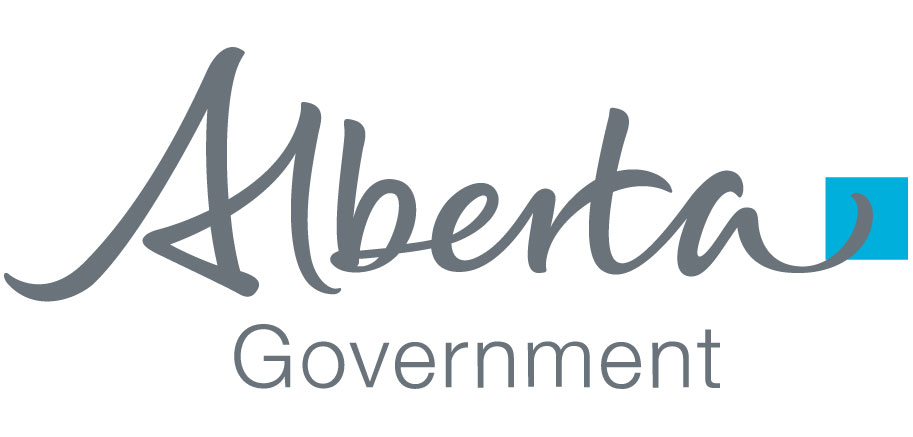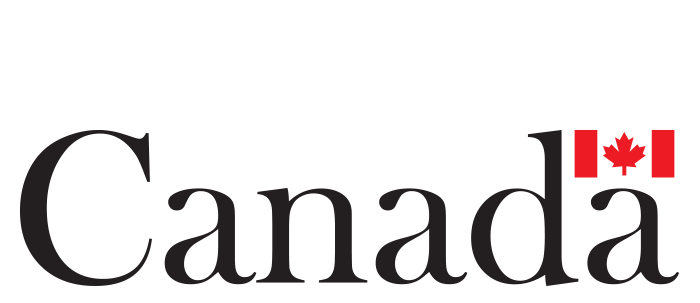Building Responsibly
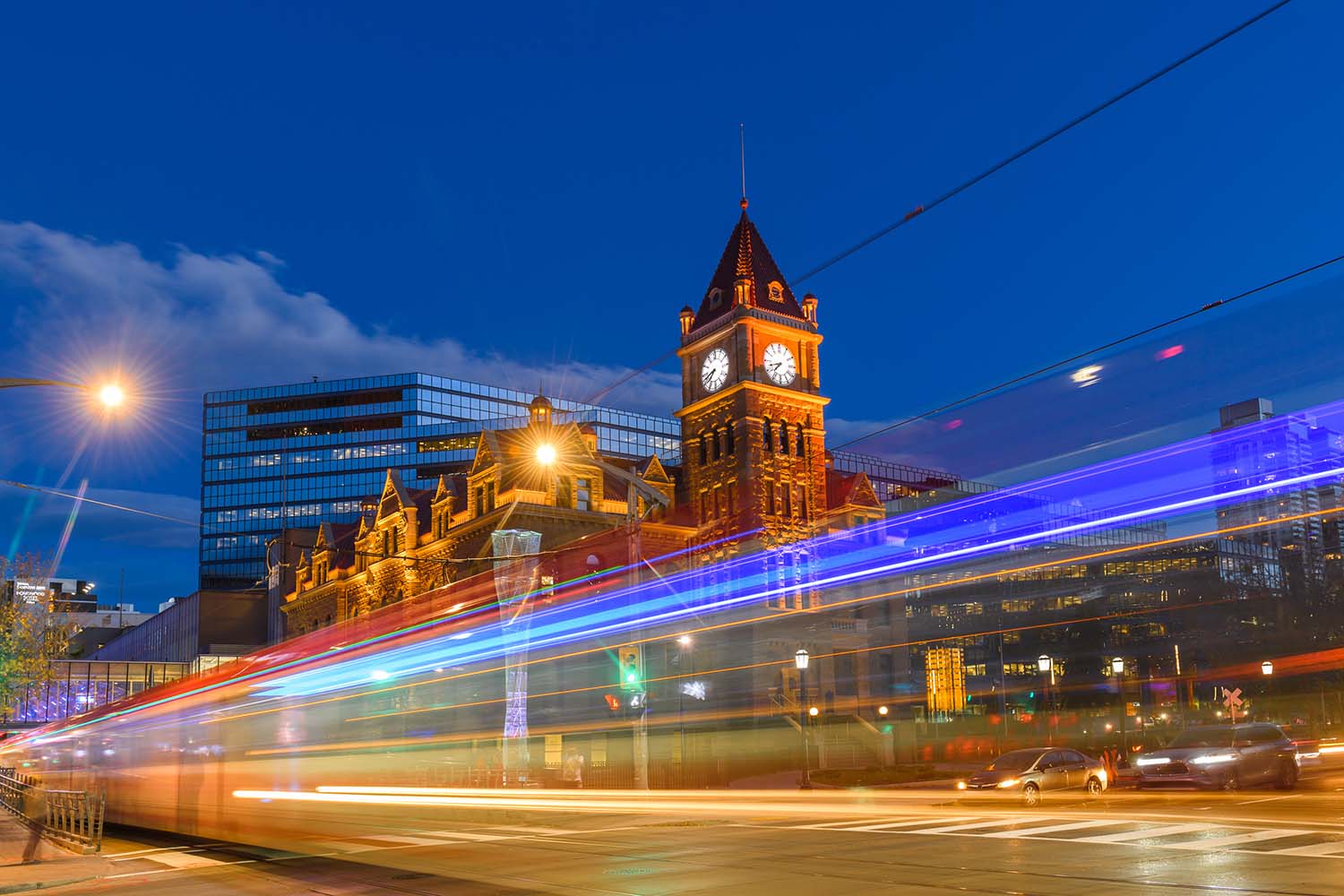
At the heart of the Green Line project lies a steadfast commitment to building responsibly
Through comprehensive environmental studies, robust environment management plans, meaningful Indigenous engagement, and thorough pre-construction due diligence, we aim to minimize environmental impacts from construction, conserve water and uphold ethical standards.
By embracing these principles, we not only deliver transit infrastructure of lasting value but also contribute to a more sustainable and equitable future for all.
Read on to learn more about:
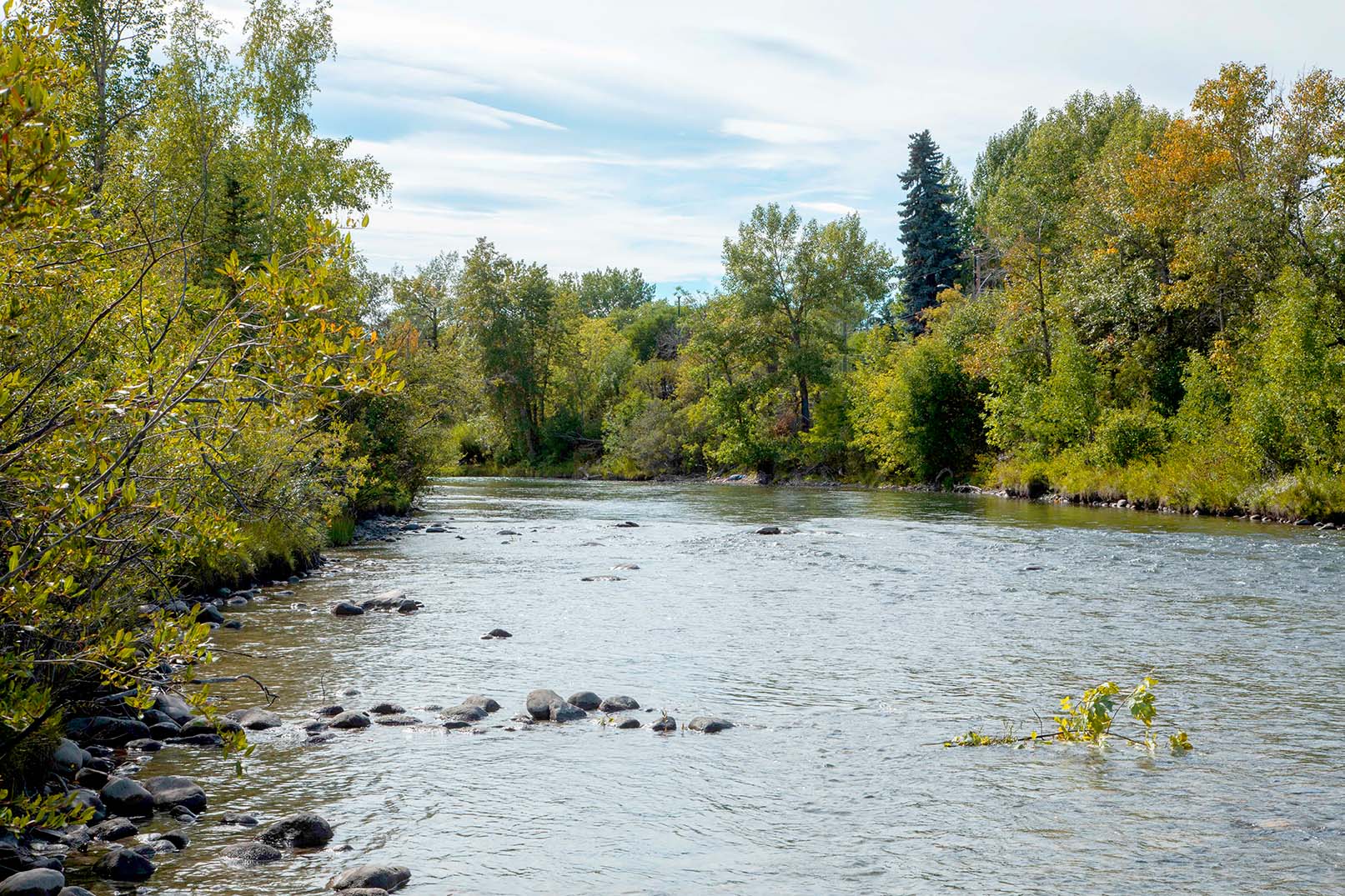
Environmental Protection
As the largest infrastructure project in Calgary’s history, building the Green Line requires careful consideration of the environment within the project boundaries.
Environmental Studies
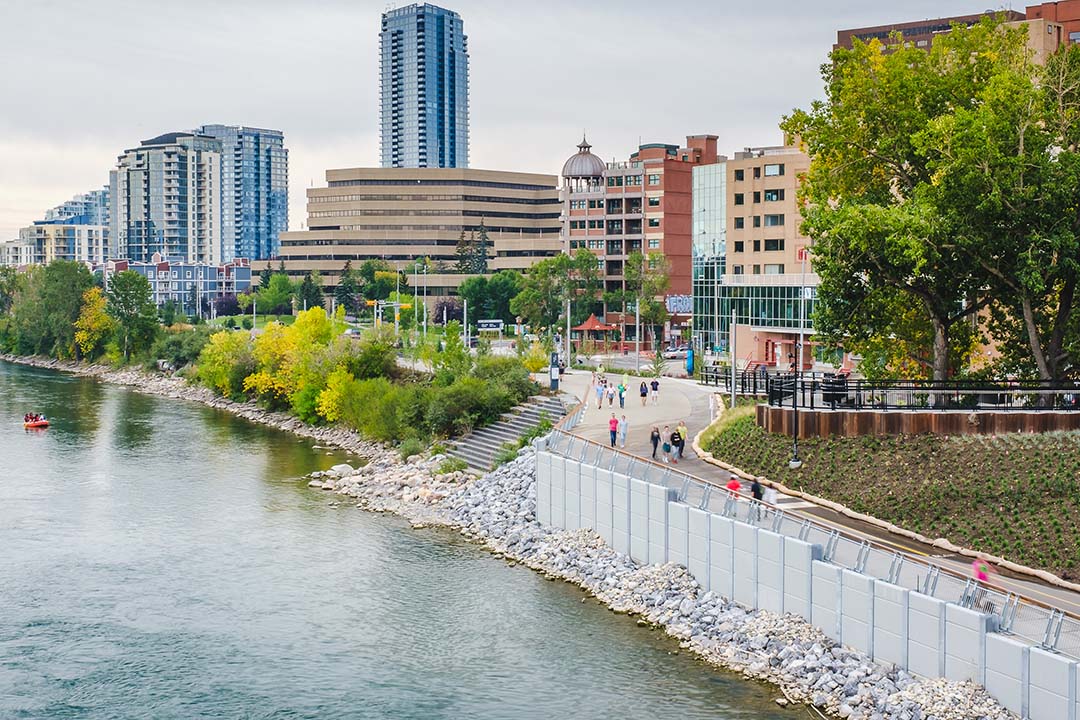
Environment Management System (EMS)
Prior to main construction, dozens of studies have been completed to identify or investigate environmentally sensitive areas.
After completing the environmental studies as part of the planning stage, information from those studies was used to inform the design and plans for the Green Line. The next step is to create the EMS, which is a framework designed to help identify, assess, manage, monitor and mitigate environmental impacts associated with the project.
| Study type | Description |
|---|---|
| Soil quality |
Test soil quality to inform how it will be managed during construction. Boreholes drilled along the Green Line provided soil samples that were studied to determine soil and bedrock conditions and contamination levels. |
| Groundwater quality |
Test groundwater quality to inform how it will be managed during construction. Groundwater monitoring wells installed along the Green Line provided groundwater samples that were tested to determine conditions and contamination levels. |
| Biophysical impact assessments (wildlife and plants) | Assess and evaluate potential impacts on vegetation, wildlife, and wildlife habitat. |
| Fish habitat | Identify fish species and breeding areas near the Green Line crossings over the Bow and Elbow Rivers. |
| Wetland assessments | Identify and classify wetland areas along the Green Line. |
| Tree inventories |
Identify and classify trees along the Green Line to prevent damage to trees during construction. |
| Historical resources | Identify historical buildings and areas with potential archaeological, paleontological, and Indigenous significance near the Green Line. |
| Noise and vibrations baseline assessments | Measure the current noise and vibrations along the Green Line to inform mitigation measures such as noise walls. |
| Hazardous building materials assessments | Survey building interiors prior to demolition for hazardous materials such as asbestos, lead, mercury, and mold. These materials need to be specially handled and removed prior to demolition. |
| Bat habitat | Survey buildings prior to demolition for potential bat habitats. |
Environmental Management Plans
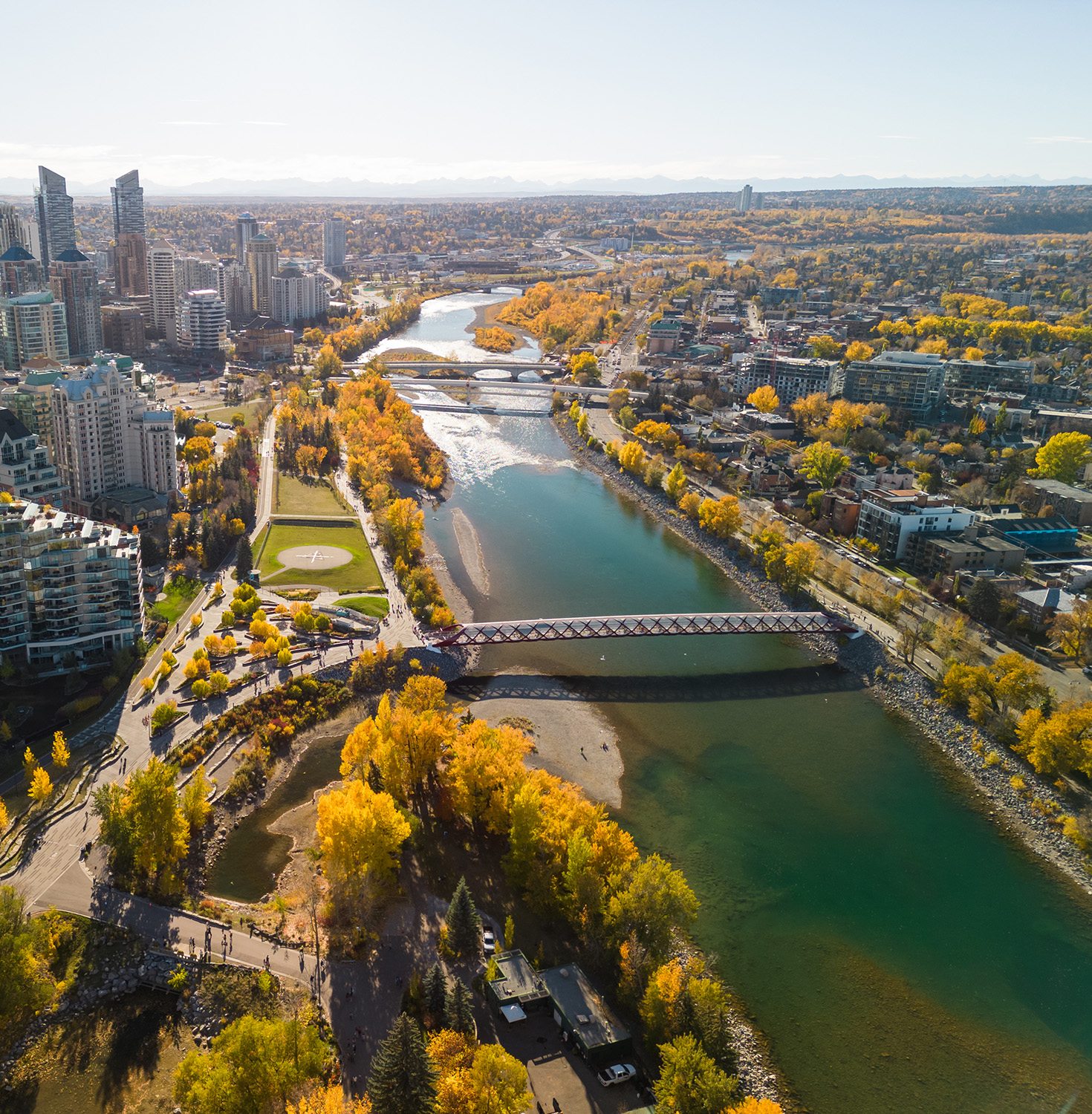
Environmental Management Plans
Environmental management plans inform the construction methods we will use, and how we’ll protect sensitive areas.
Management plans are in place for the following:
- Soil
- Water
- Aquatics
- Vegetation
- Wildlife
- Air quality
- Pests
- Habitat restoration and rehabilitation
- Erosion and sediment control
- Historical resources
- Construction noise and vibration
- Environmental incidents
- Hazardous substance and hazardous waste
- Non-hazardous waste
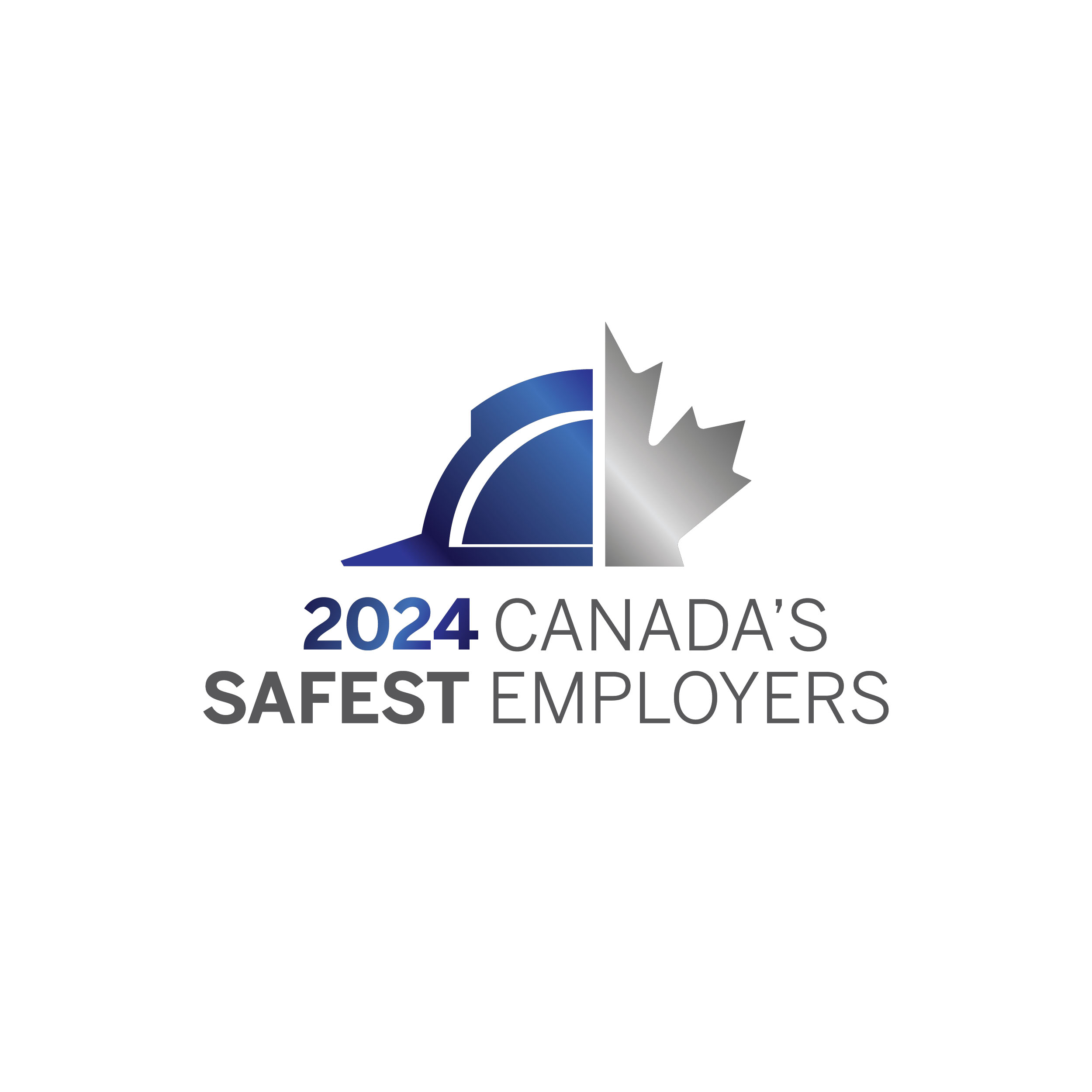
Best Environment Management Program
Green Line won the Best Environment Management Program award through Canada’s Safest Employers Awards for 2024.
This award recognizes excellence in environmental protection in concordance with health and safety management.
Tree Removals

Green Line is deeply committed to protecting, restoring, and enhancing the natural environment along the SE alignment, and tree and shrub removals are only undertaken as a last resort to support critical infrastructure.
When removals are necessary to facilitate construction, we work with City departments, Indigenous Knowledge Holders, and community partners to restore the natural habitat and rebuild the public tree canopy. Our goal is to ensure that restoration efforts reflect community values and ecological priorities.

Honouring Indigenous stewardship
Supporting Indigenous approaches to land stewardship and restoration is a priority for Green Line. Before any vegetation removal, we ensure Indigenous harvesting can take place, respecting traditional practices and knowledge.
Enhancing station landscapes
Trees, shrubs, and grasses will be planted directly around future Green Line stations, creating vibrant spaces for residents and transit users.
Building resilience through native species
By planting native species wherever possible, we are helping to rebuild soil health, restore natural habitats, support biodiversity, and improve climate resilience, strengthening Calgary’s natural systems for generations to come.
Did You Know?

Did You Know?
- Over 500 individual trees have been identified along the route. The most common species are Balsam poplar, Colorado spruce, Green ash, and Manitoba maple.
- There are nine species of bats in Alberta – six species hibernate over winter and three species migrate south. Prior to demolition, buildings must be checked for hibernating bats and for areas where migrating bats might stop.
- In the areas near Green Line water crossings, 23 different fish species have been documented in the Bow River and 12 different species in the Elbow River.
- Two snake species, eight mammal species, and 43 bird species have been documented within the region of the Green Line.
- Over 800 boreholes and test pits have been drilled since 2014 to analyze soil, bedrock, and groundwater conditions. If we combined all the boreholes, which are up to 40m deep each, it would total 32km deep.
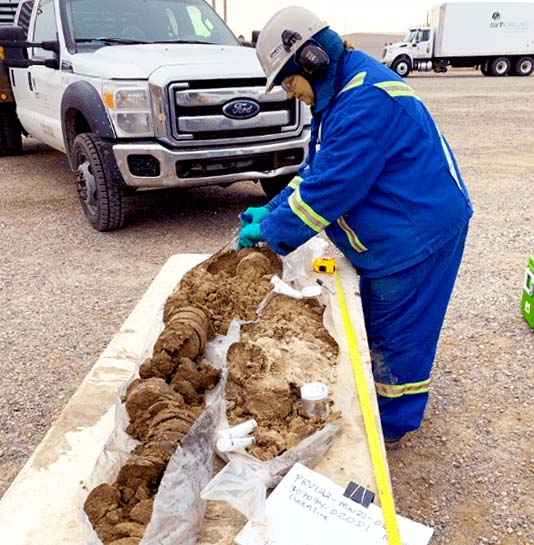
Testing Ground Conditions
Prior to main construction of tracks, stations, tunnels and bridges, due diligence is conducted to test ground conditions through a series of geotechnical and environmental borehole drilling exercises.
Geotechnical and Environmental Tests
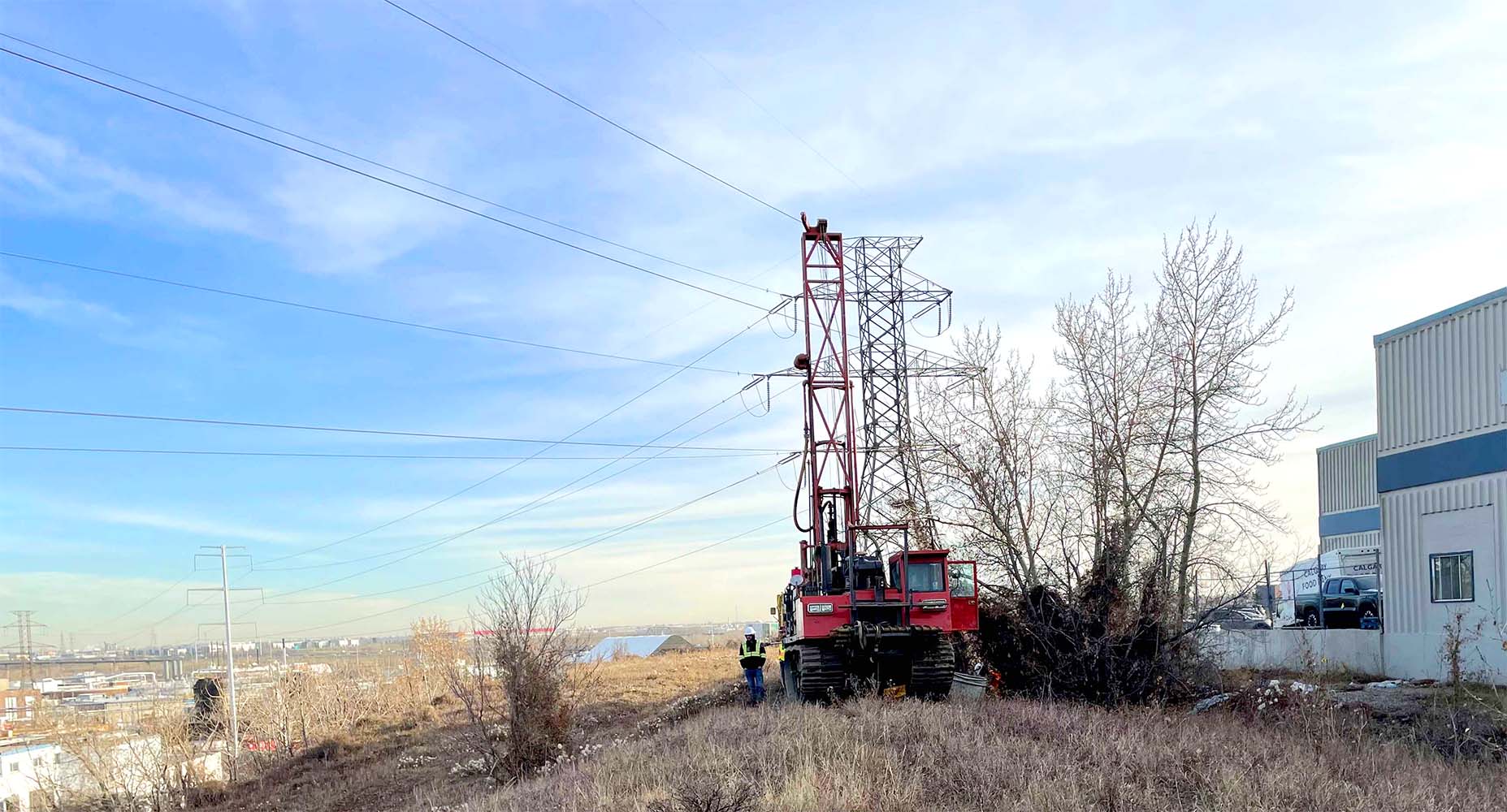
Both geotechnical and environmental tests involve drilling boreholes into the ground, collecting samples, then analyzing the material. More than 800 boreholes and test pits have been drilled since 2014, providing critical information about the ground and what we can expect.
The information collected is used to help us remove elements of risk from the project, design the best structures for the soil/rock conditions, and better estimate project costs.
Due Diligence Program
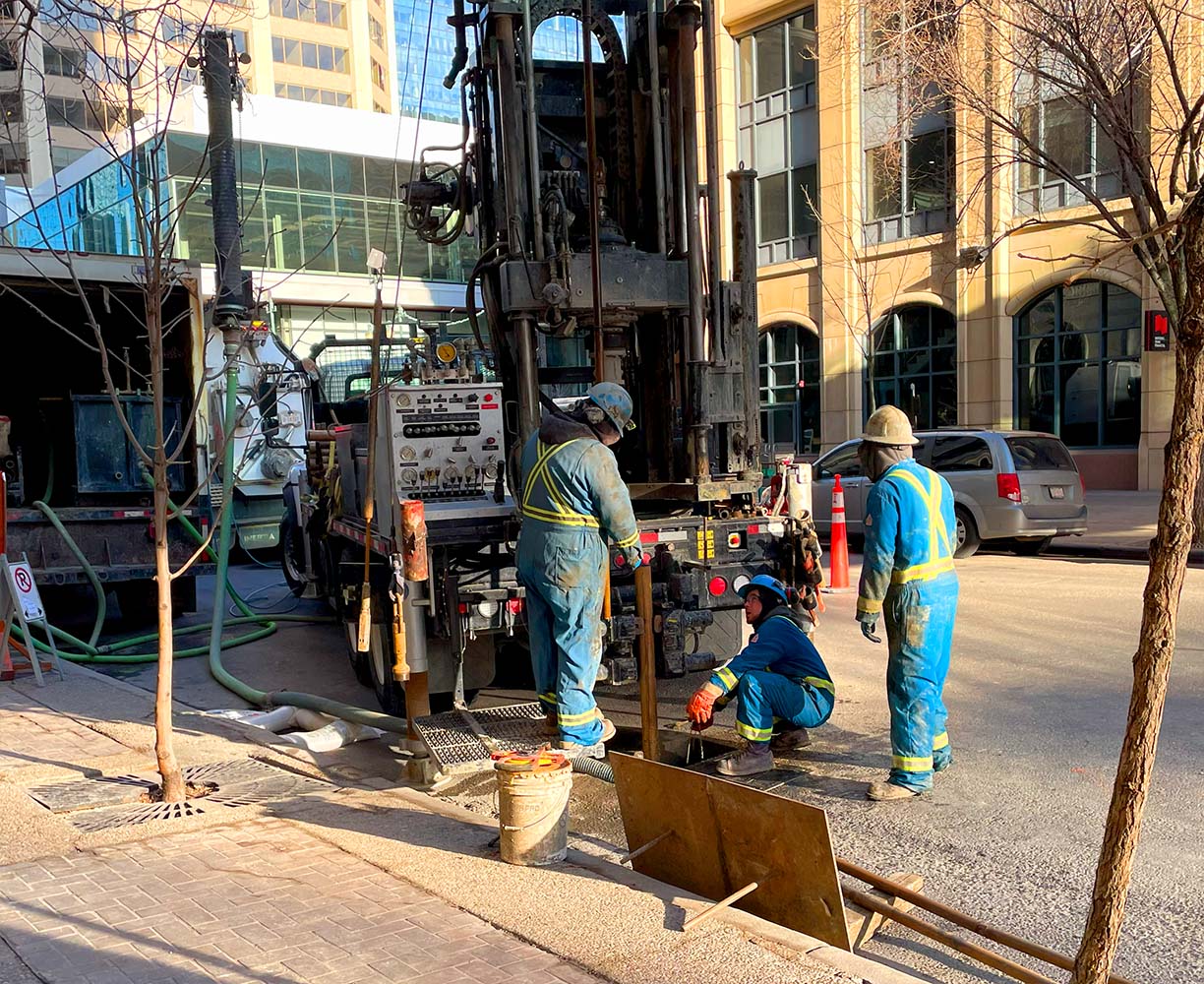
In Fall 2023, our due diligence program achieved
- 3,000+ drill hours
- 88 boreholes
- 1,000+ soil samples
This data helped us determine the best building techniques and materials for the soil and bedrock conditions.
Meet the Calgarians Building the Green Line: Damian Brake, Core Drilling
“The purpose of our drilling is to recover core samples from multiple layers below the ground so the engineers can design the foundations for the upcoming transit system.”
– Damian Brake, Core Drilling
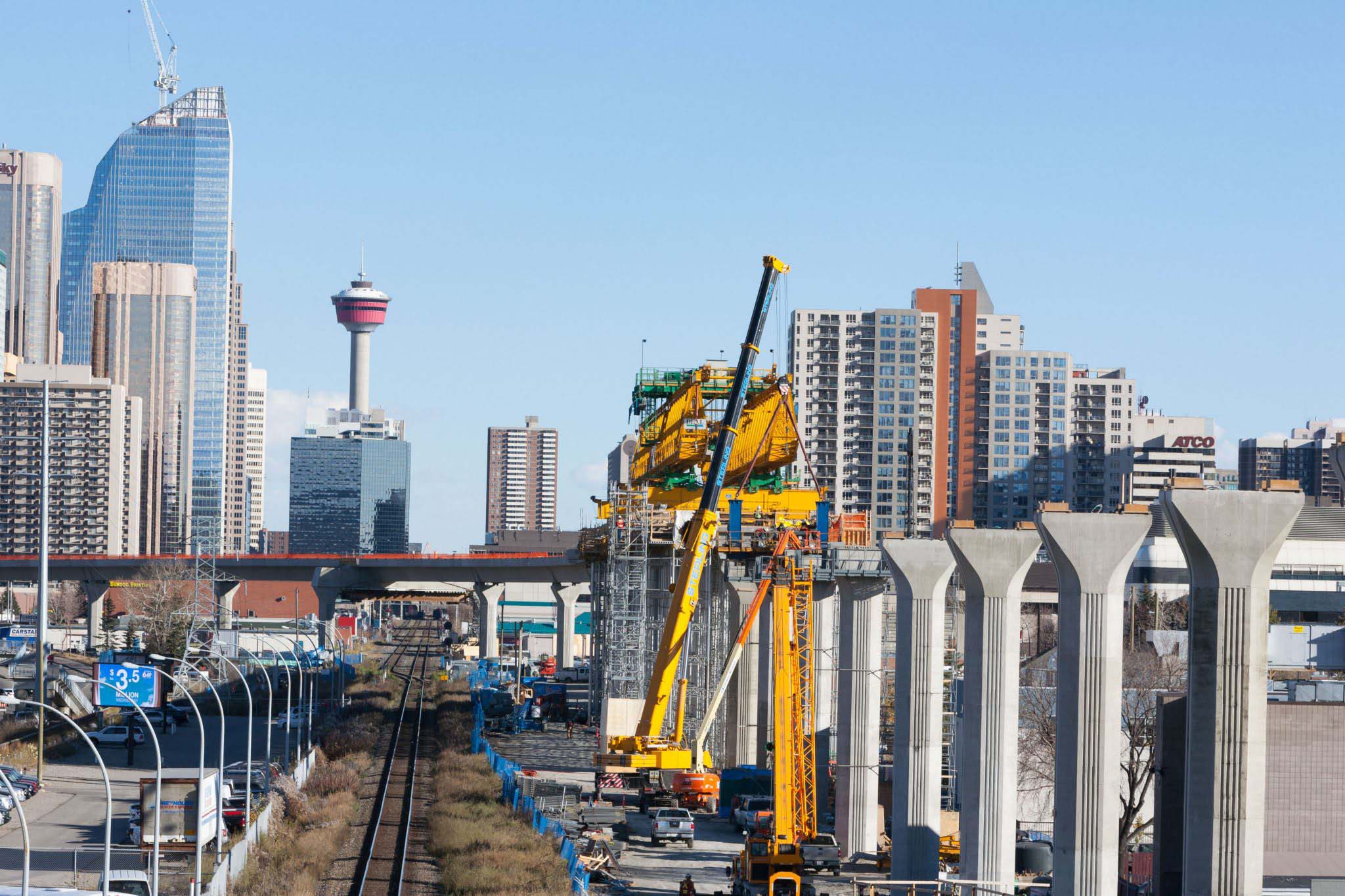
Noise and Vibration
Mitigating the impacts from noise and vibration produced during construction and ongoing operations of the LRT Line is a key focus for Green Line.
Disturbances created during construction by heavy machinery, power tools and generators used on large infrastructure projects can impact workers, local businesses and communities and the environment, and are proactively addressed.
Potential noise and vibration impacts from construction activities on the community will be anticipated and appropriate mitigations measures will be deployed to target compliance with the applicable criteria.
Noise Mitigation Measures
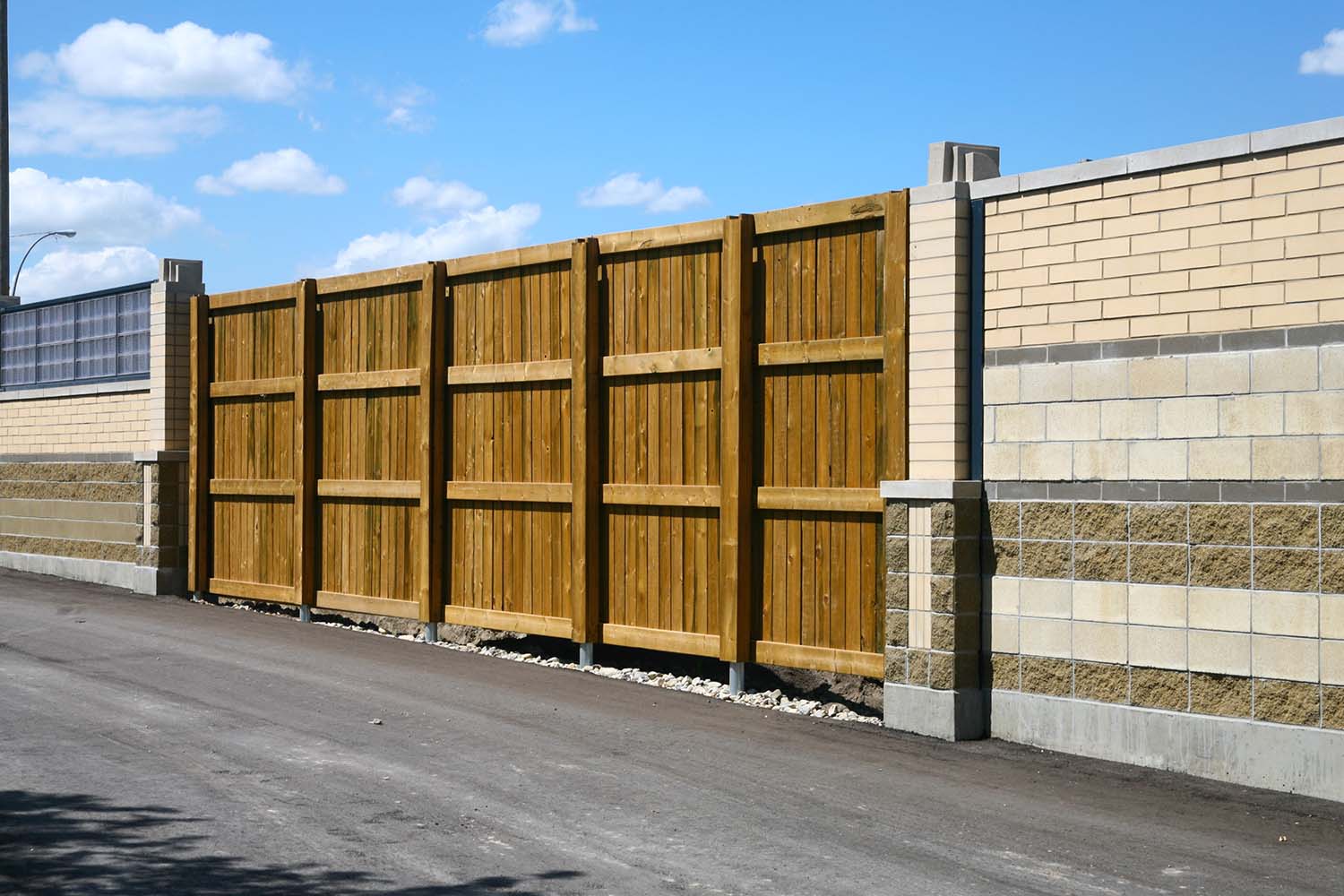
Mitigation Measures Typically Include
- Temporary noise barriers and enclosures.
- Use of broadband reversing alarms.
- Selection of low impact construction techniques and machinery.
- Careful management and organization of site works.
Noise and vibration monitoring will be undertaken to assess construction works against the applicable limits in real-time and corrective actions will be implemented where exceedances are detected.
The LRT line, including its stations, maintenance and storage facility and all ancillary equipment will be designed so ongoing operations comply with relevant City noise bylaws and policies as well as reference guidelines on noise and vibration impacts from LRT systems.
Noise and vibration controls will be integrated in the LRT line along the entire project footprint.
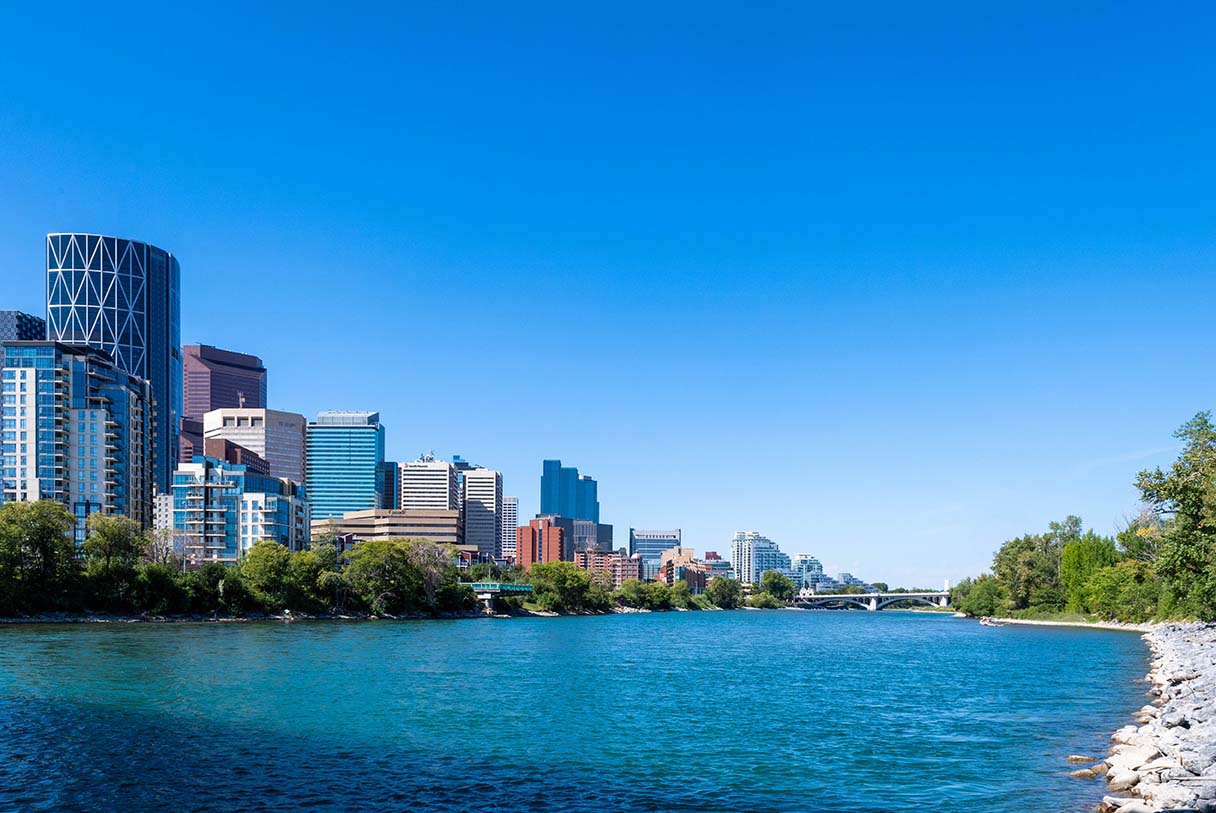
Water Stewardship
Green Line is committed to water stewardship during construction and when the LRT system is operational.
Reducing Non-Essential Water Use
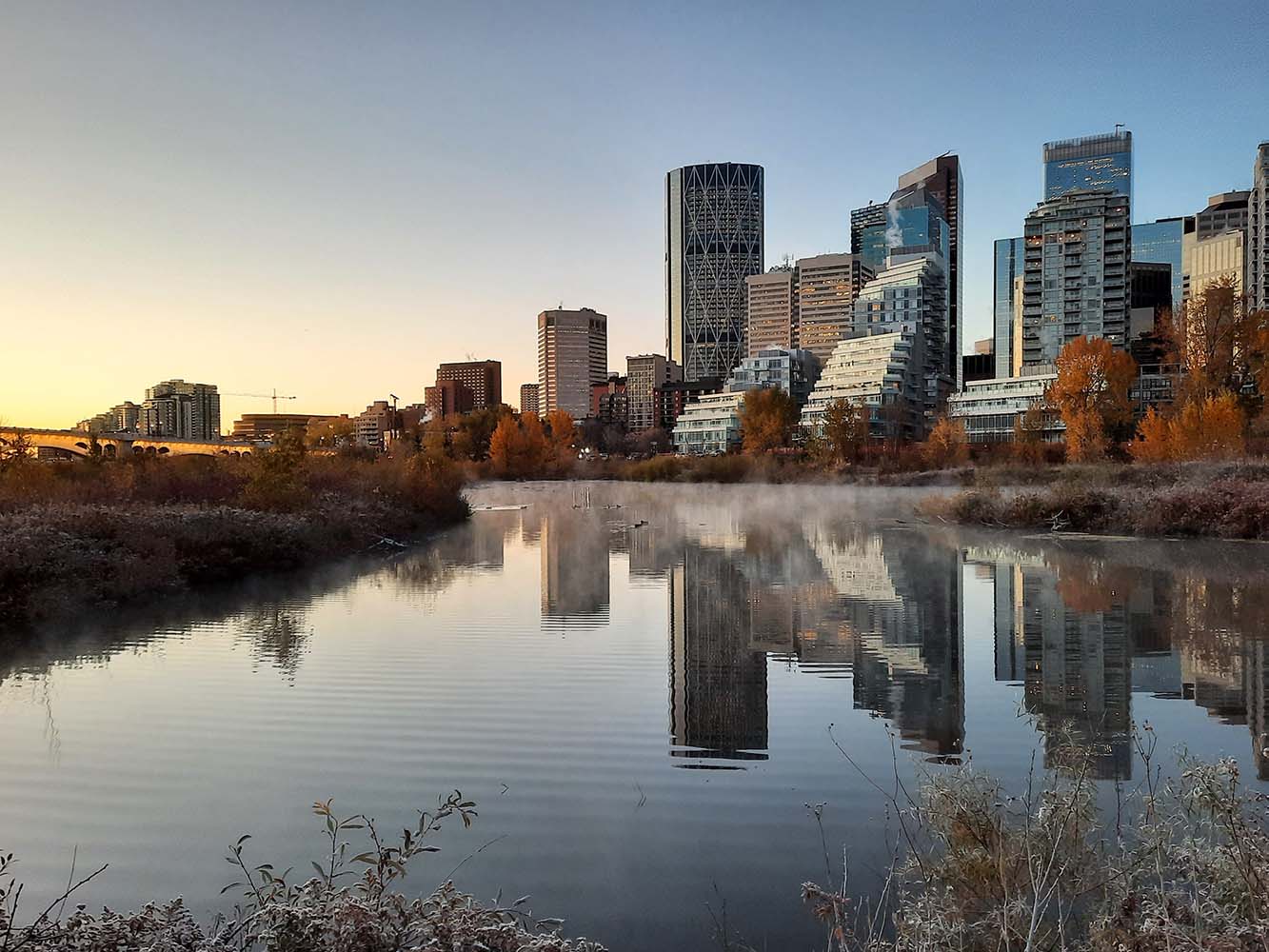
Reducing Non-Essential Water Use During Construction
Green Line, like all City departments and business units, is working to address the impacts of long-term water scarcity in southern Alberta by reducing non-essential water use and adjust the timing or methods of usage.
Green Line construction contractors are required to identify and implement strategies to minimize water consumption during construction. These strategies, which will be selected during construction planning, may include innovative methods for dust suppression, truck washing, and concrete curing.
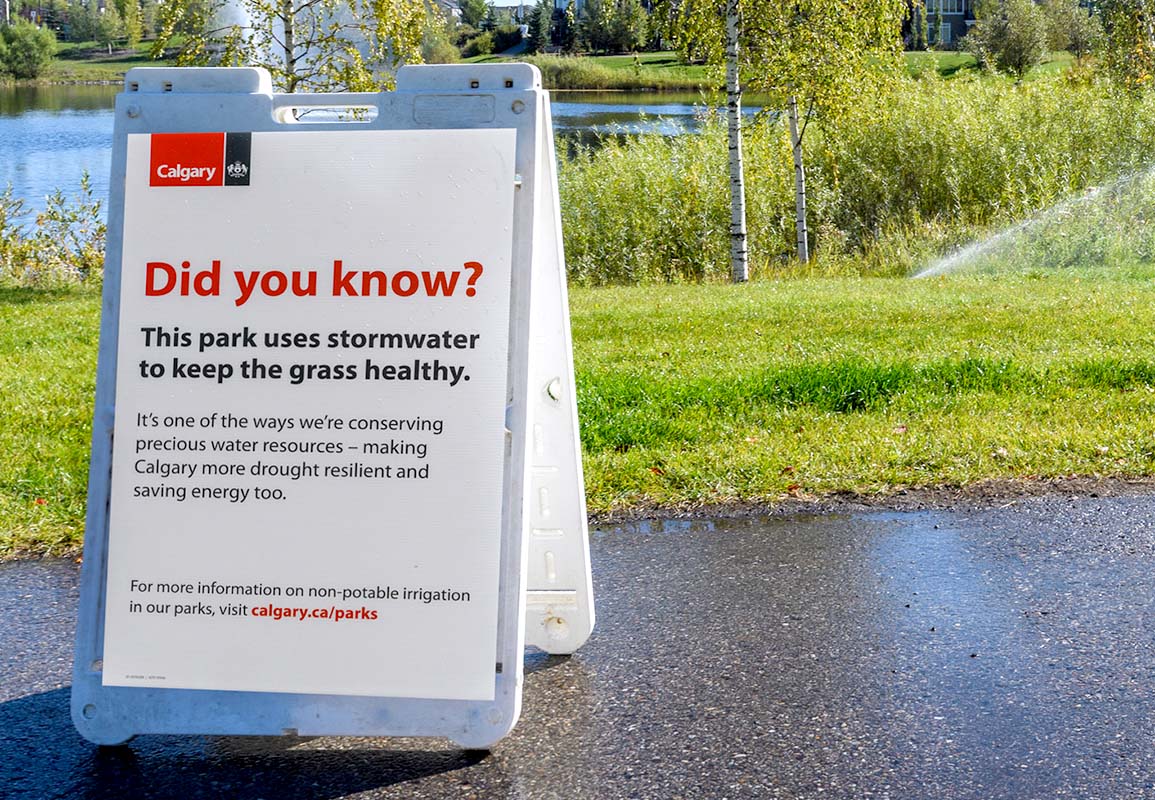
Stormwater harvesting and storage
To reduce use of the City’s water supply, Green Line will have several dry storm ponds and outlet control structures to manage off-site water flow. Underground storage tanks (each with a capacity of about 1,000 cubic metres) will be connected to roof drainage collection at key facilities and the water used in wash bays or site irrigation.
Water Use During Future LRT Operations
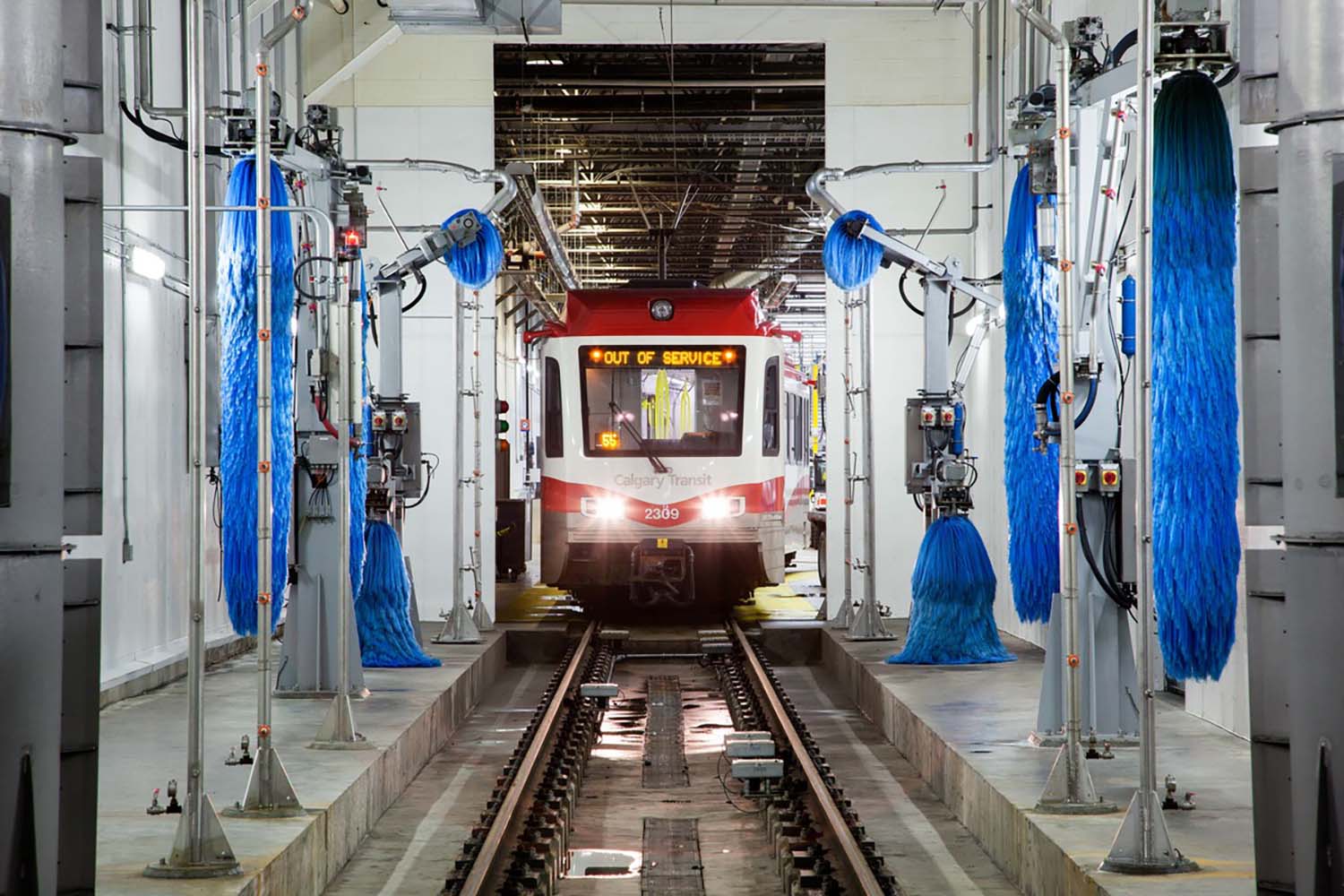
Water Use During Future LRT Operations
Green Line is also proactively designing for low water use during future LRT operation:
- Rainwater harvesting and recycling: Use of rainwater for train washing and recycling of 70 per cent of washwater.
- Drought resistant landscaping: Selection of local drought-tolerant plants which do not require irrigation.
- High-efficiency fixtures: 40 per cent reduction in water use in stations.
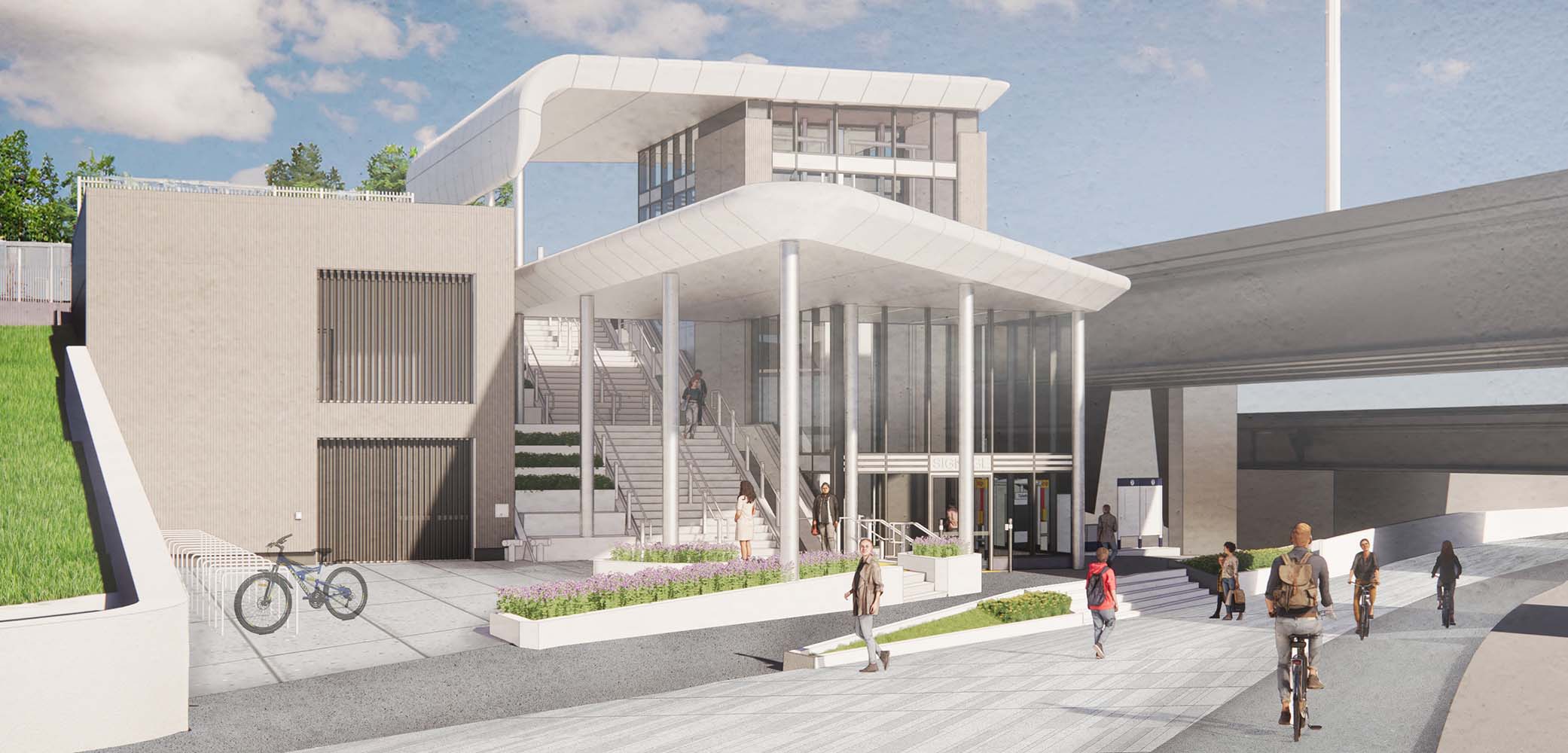
Envision Framework
Green Line is being developed to achieve an award under the Envision Framework for Sustainable Infrastructure that evaluates the social, environmental and economic benefits of major infrastructure projects.
Envision Framework for Sustainable Infrastructure
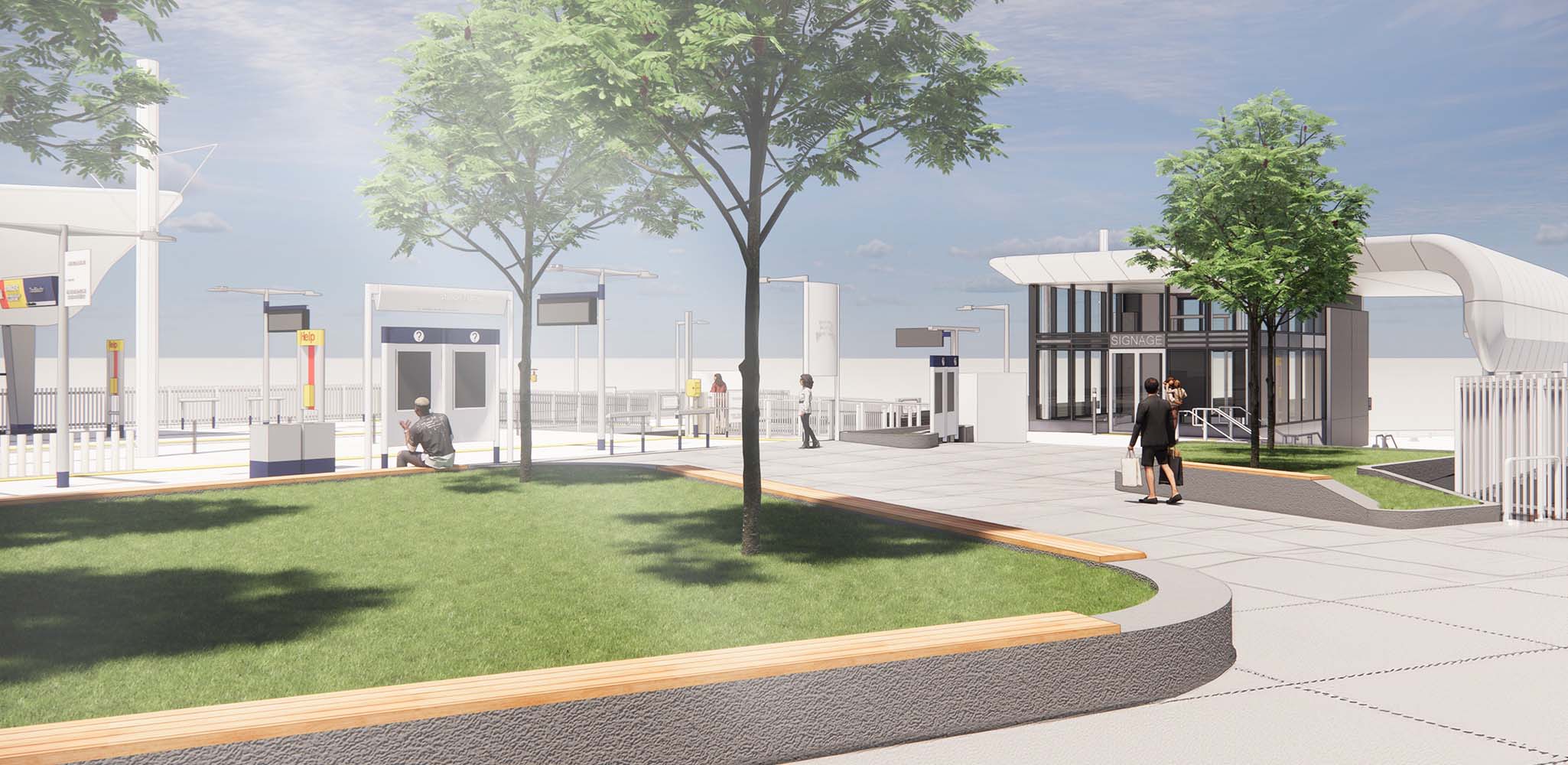
Envision Framework for Sustainable Infrastructure
The impacts of climate change and population growth have accelerated the need to develop sustainable infrastructure and the Envision Framework helps to guide the planning, design, and delivery of projects that are sustainable, resilient and equitable.
Developing sustainable infrastructure is one way for communities to protect the environment, enhance human health and well-being and bolster economic prosperity. The Envision Framework provides decision makers and project teams a system of criteria, performance objectives and third-party verification to meet those objectives.
Envision for Green Line
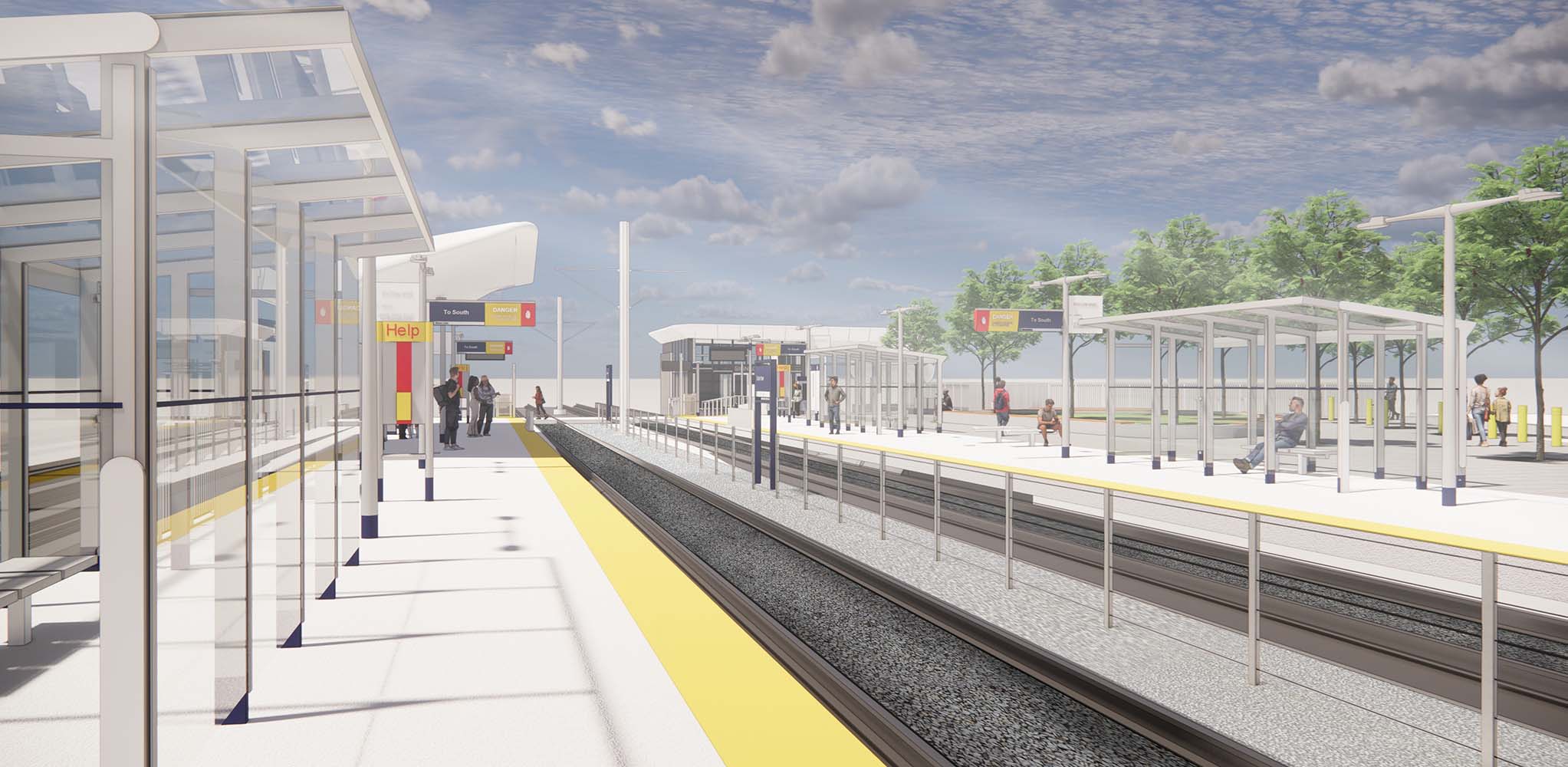
Envision for Green Line
The Envision Framework is being applied to the planning design, construction, and future operation of Green Line. The initiative is overseen by a team that includes Green Line leadership collaborating with key staff from The City of Calgary and major contractors on the project.
The Framework helps to ensure Green Line has a coordinated approach to maximize the social and environmental benefits of a project of this size that includes construction in developed urban areas and crossing of two waterways (the Bow and Elbow rivers).
The Envision Framework has five areas of focus to guide planning, design, construction and operations and measure the accomplishments for Green Line.
Institute for Sustainable Infrastructure

Institute for Sustainable Infrastructure
The Institute for Sustainable Infrastructure (ISI) is an education and research nonprofit established in 2010 in Washington DC in response to the need for a comprehensive sustainability framework and rating system suitable for use in civil infrastructure development.
The ISI collaborated with the then Zofnass Program for Sustainable Infrastructure at the Harvard University Graduate School of Design to develop the Envision Framework. The framework has been developed to be universally applicable to all sectors of infrastructure including energy, water, waste, transportation, landscape management and information systems. Two Alberta projects have previously received Envision awards: the City of Red Deer’s Water Treatment Plant Residuals Management Facility Project and the Lacombe Main Street Program.
Envision Verification Process

Envision Verification Process
The project’s sustainability performance is evaluated on information provided for each area of focus. The combined scores determine an overall rating or award level. Envision is an evidence-based program and results must be reviewed by a third-party verifier to achieve an award.
The Envision Framework comprises 64 sustainability indicators which cover the full lifecycle of the project. To achieve an award, Green Line will have to earn points by providing evidence that the project's planning, design, construction and operational stages follow the Envision sustainability guidelines.
Examples of the improvements targeted as part of Green Line:
- Waste management by targeting, 75 % waste diversion during construction.
- Beneficial reuse of excavated soils to minimize trucking distances
- Interested party engagement strategy that allows for the identification of key parties, needs, and project consultation means.
- Construction of a replacement wetland to compensate for wetland loss.
- Reduced water usage during construction of the Green Line.
Climate Resilience

Climate Resilience
As part of the Government of Canada’s Investing in Canada Infrastructure Program, a Climate Lens Assessment was conducted to evaluate Green Line’s resilience to climate-related hazards such as extreme heat, flooding, and severe storms. This assessment supports informed decision-making and helps reduce climate-related risks while advancing Canada’s clean growth and low-carbon economy goals.
The assessment analyzed how various components—like tracks, stations, vehicles, and bridges—might be impacted by changing climate conditions through the end of the century. Key risks identified include heat-related damage to rail systems, flooding of infrastructure, and service disruptions due to extreme weather. In response, the City of Calgary has proposed a range of mitigation strategies, including climate-adapted vehicle design, elevated tracks in flood-prone areas, and robust stormwater management systems. These measures aim to ensure the long-term safety, reliability, and sustainability of Green Line for Calgarians.

